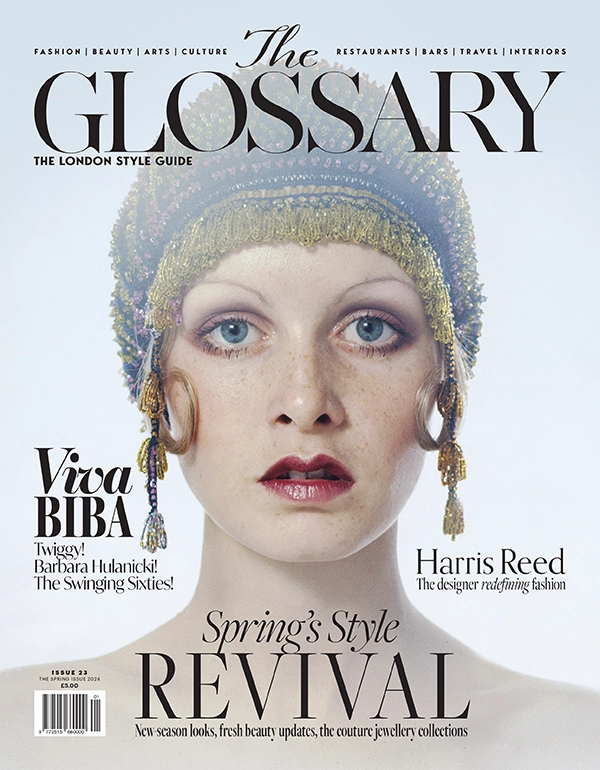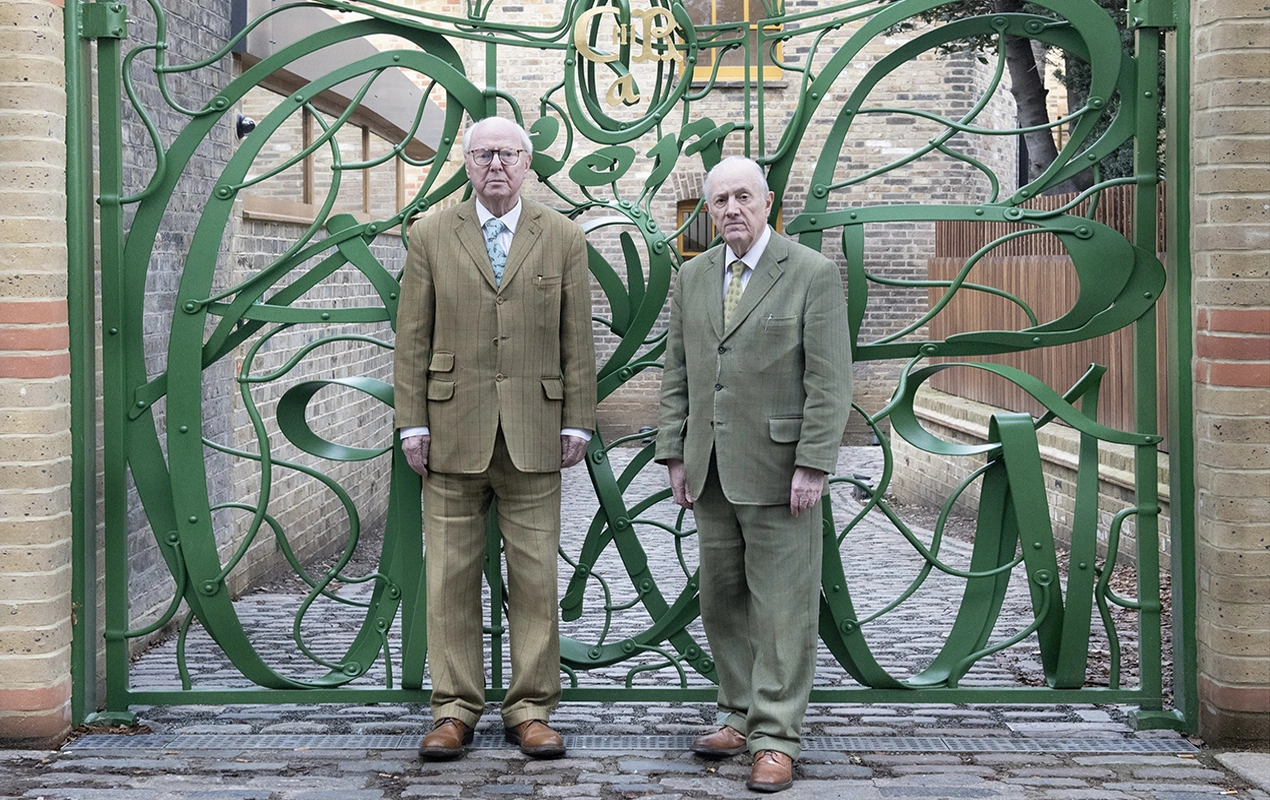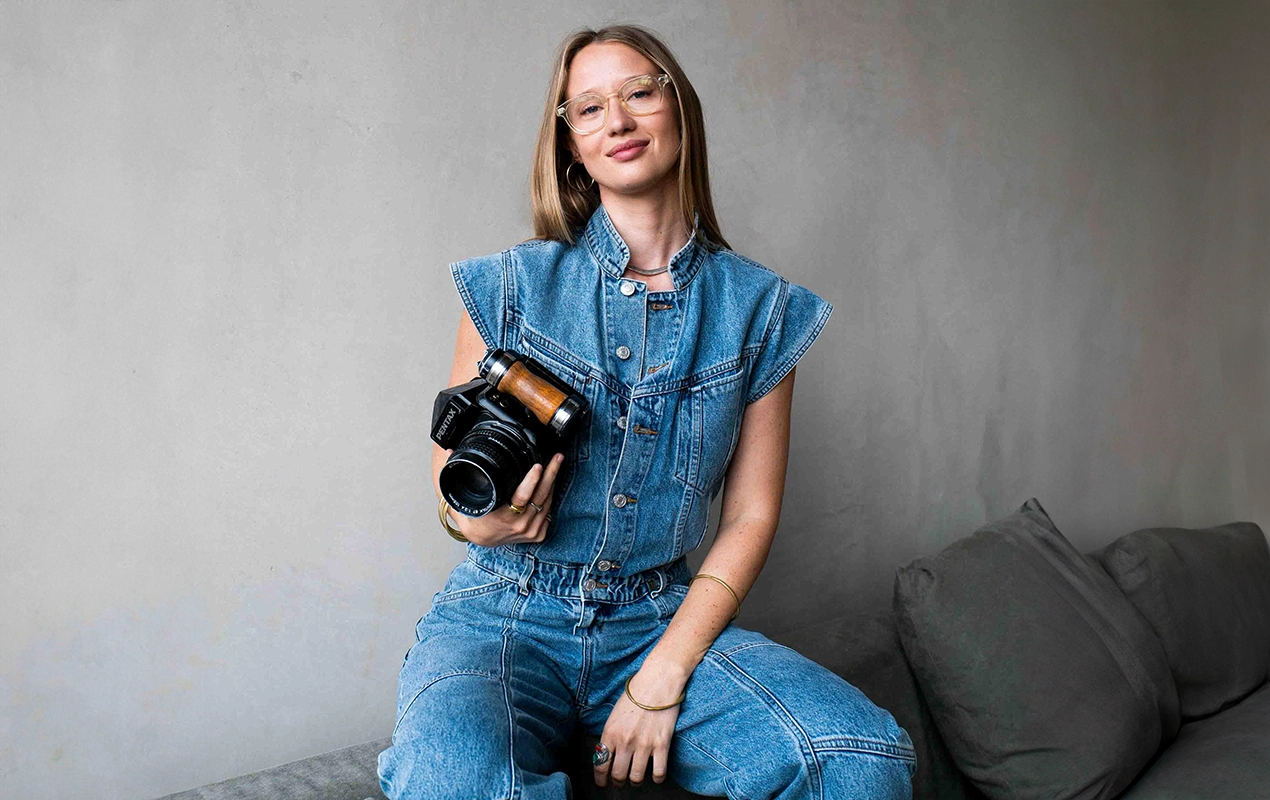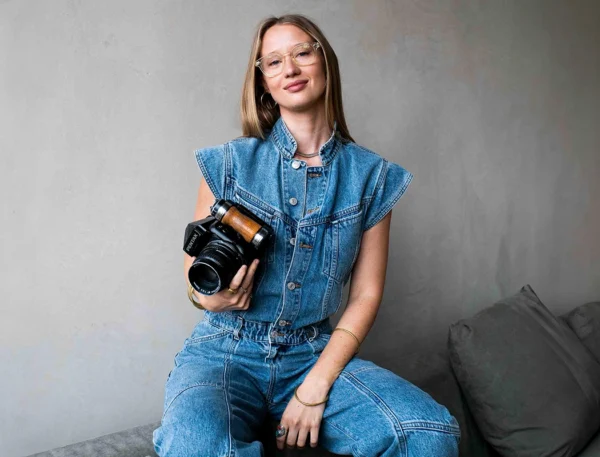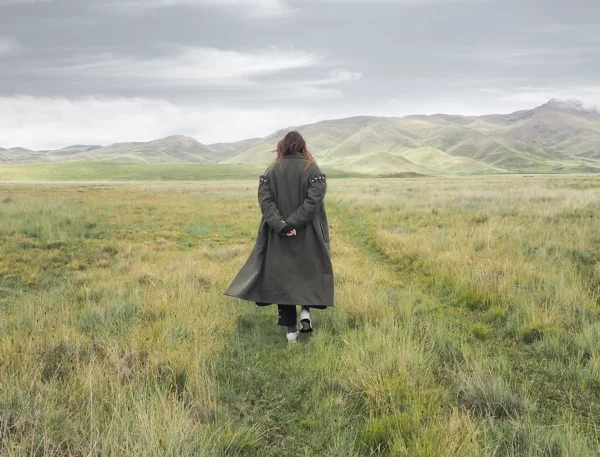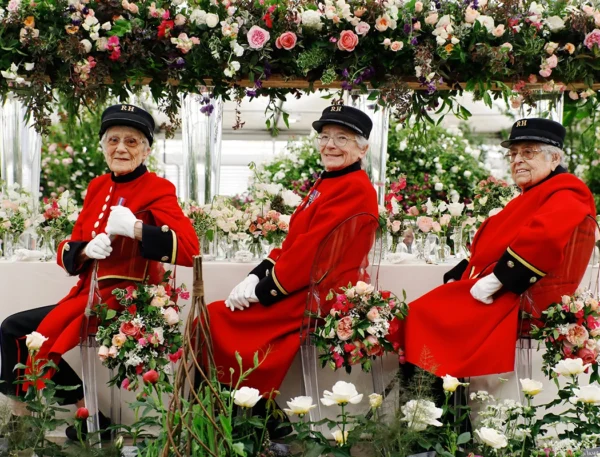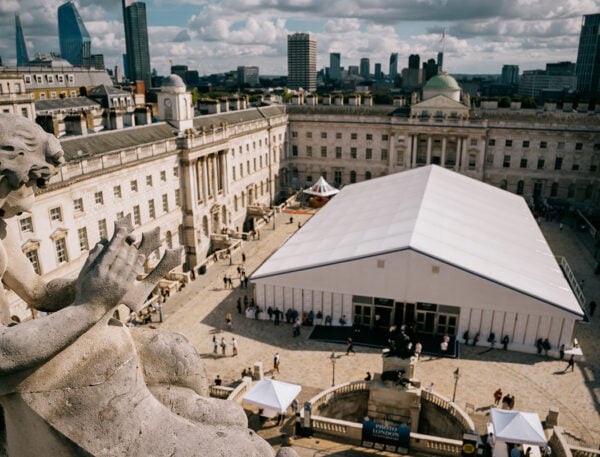As you’d expect, the new Gilbert and George Centre is quite something. The space in Spitalfields, which opens on 1 April, was once a brewery and has now been converted into a gallery and museum to showcase the work of the collaborative art duo. On the eve of the centre’s opening, Gilbert and George reveal why they are dedicated to preserving their ‘art for all’.
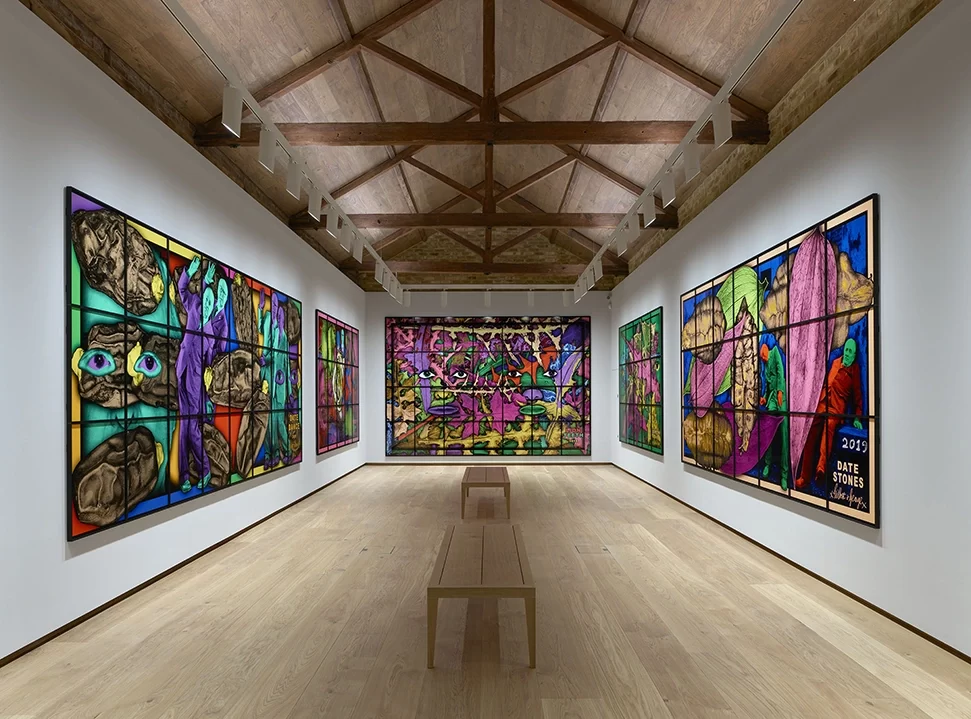 Pin
Pin On a cobbled street in east London, nestled between The Pride of Spitalfields pub and a row of unassuming Victorian houses, a theatrical pair of green, wrought-iron gates bear the initials G&G. At the top C III R, the sovereign’s monogram, glimmers in gold. This is the pleasingly eccentric entrance to the brand-new Gilbert and George Centre, a museum dedicated to the work of Britain’s best-known artistic duo. Now in their 80s, Gilbert Prousch and George Passmore have been working together since the 1960s, casting themselves on the world stage as a single artistic entity, a living work of art. They married in 2008. It was, they say, love at first sight.
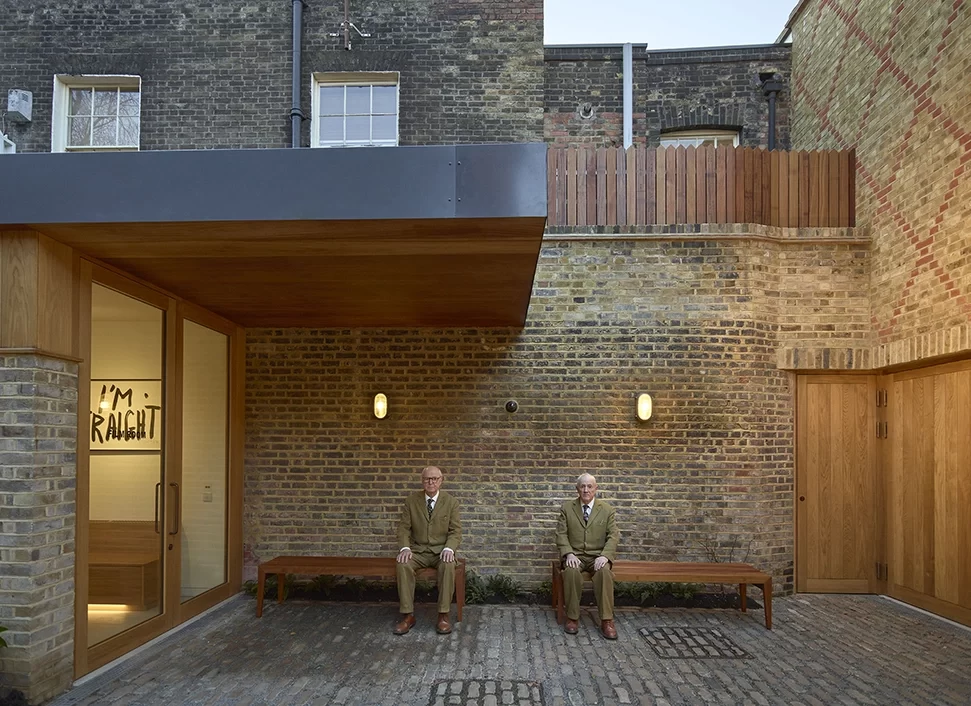 Pin
Pin The centre, which opens on 1 April, is on Heneage Street, just off Brick Lane, a two-minute walk from Gilbert and George’s restored Georgian home and studio on Fournier Street. The couple hope this new space will form a major part of their legacy, with one or two exhibitions per year showcasing their creations. “We always wanted to do an art for all,” Gilbert tells The Glossary exclusively. “Now everyone can have a look at it, if they want to.” In keeping with this spirit, the centre, which is funded by the couple and registered as a charity, will be free to visit.
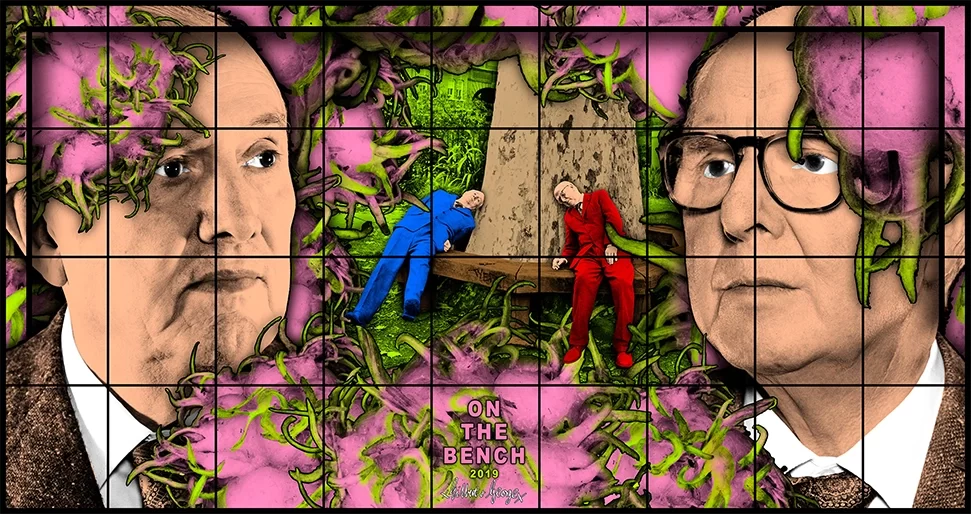 Pin
Pin It is housed in a former brewery dating to the 1820s, a time when the surrounding area was a multicultural hub of industry. This is where the city’s tanners, textile dyers, brewers and metalworkers were based, away from the more genteel world of the upper classes. “The poverty of the area was recorded in the writings of Dickens and Defoe,” says the project’s architect, Manuel Irsara. “Gilbert and George have always been nonconformists, in a similar manner to the revolutionaries who based themselves here in the 17th and 18th century. The centre is a fitting continuation of that spirit.”
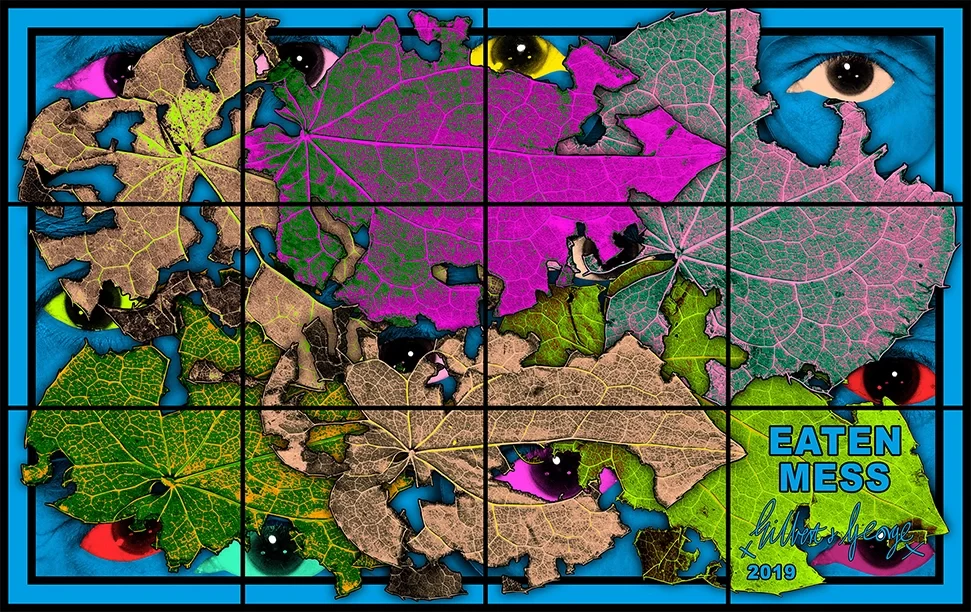 Pin
Pin In fact, just a few streets away sits the nonconformist burial ground of Bunhill Fields, the final resting place of radicals and freethinkers. William Blake, a particular favourite of Gilbert and George is buried here. How do they feel about this historic corner of London, which has been their home for more than half a century? “We believe it’s the centre of the universe,” George tells us. “We live on Fournier Street, which is French, not British, built on a Roman cemetery. The next street celebrates the name of John Wilkes, who invented the free press. What a clever thing to do. Extraordinary.”
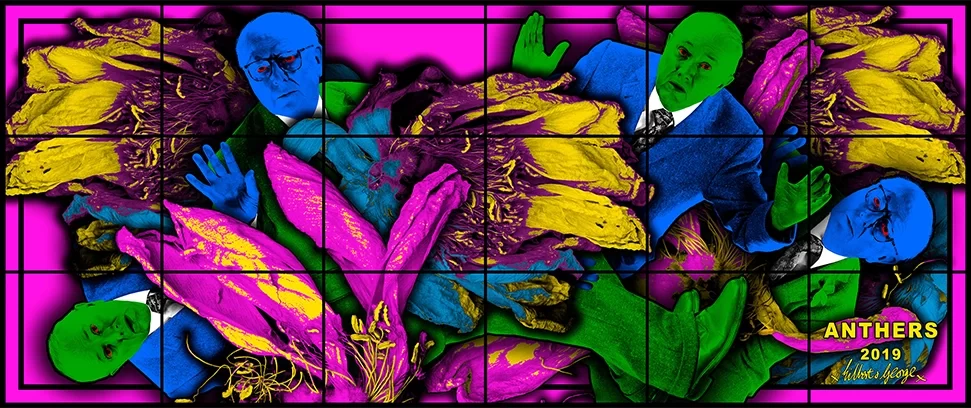 Pin
Pin The centre itself is accessed via a leafy courtyard where a small free-standing film room offers an introduction to Gilbert and George’s work. The main reception is a cosy space, boasting many of the brewery’s original features, such as the riveted iron columns that support the low, beamed ceiling. In a nod to the couple’s Georgian home, the building boasts high-end detailing, such as oak flooring, bronze handrails and brass worktops. The spacious ground floor gallery is lit with inset panels, which act like artificial skylights. The first floor provides a second exhibition space with an elegant vaulted ceiling that honours the building’s industrial past. During construction, a basement was excavated beneath the centre to house a third gallery and to provide space for the huge amount of art that will be stored behind the scenes.
Gilbert
The centre’s inaugural show is titled The Paradisical Pictures. In these images, the artists’ faces are jumbled with rotting leaves and psychedelic flowers. In some works, noses, eyes and mouths are digitally collaged onto date stones, like nightmarish incarnations of Mr Potato Head. What does it all mean? “We’ve started The Gilbert and George Centre with the Paradisical Pictures,” George says. “Most people think of paradise as the after party, so we’ve reversed it. The pictures are here to address the people who believe in the afterlife and they also talk to the people who don’t believe in the afterlife.”
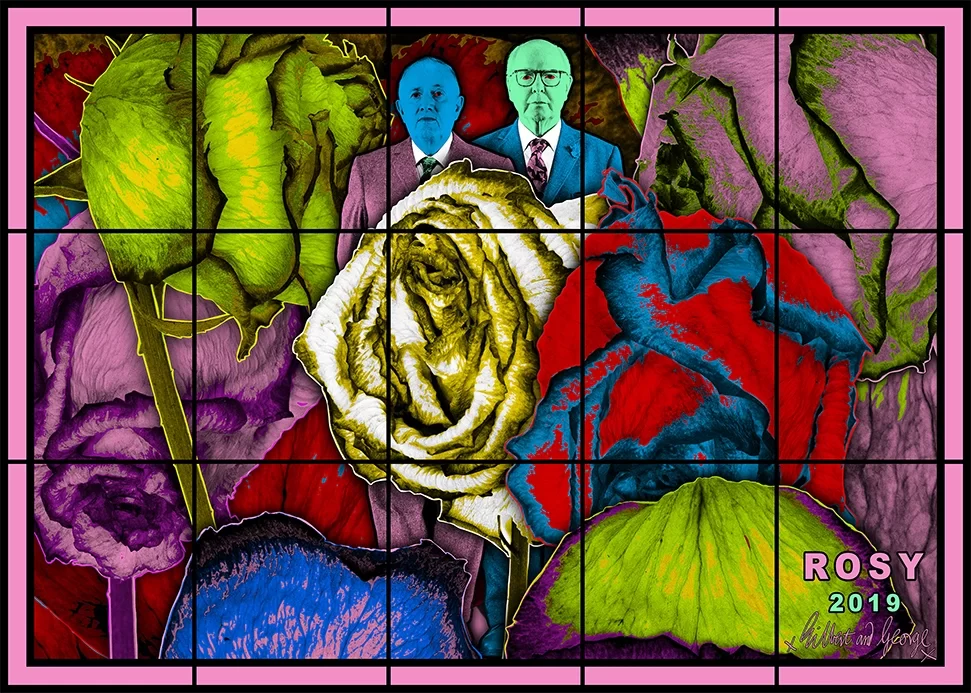 Pin
Pin Surely this is a strange vision of paradise? “It’s about human thought,” George explains. “We’re not such damn silly people as to believe there’s such a place as paradise, but we’re discussing what people think, or don’t think, about it.” It is as though Gilbert and George have created in these images a vision of Eden. The decaying plant life is vibrantly coloured, as though receiving a second chance at life. The artists are the seeds, the figs, the flowers, the agents of their own rebirth and immortality. One gets the sense that while Gilbert and George are touching on wider ideas of the afterlife, they are actually communicating a very personal perspective. “It is the inner feeling of a vision,” Gilbert says. “It could be paradise now, here, in some way.” If the couple were to enter an afterlife of their own design, what would it look like? “I think walking up and down Brick Lane, George?” Gilbert replies with a wry smile. Then off to their favourite Turkish restaurant in the evening, George says.
On 29 March – just a few days before The Gilbert and George Centre welcomes the public for the first time – the White Cube at Mason’s Yard will open The Corpsing Pictures, a show that presents images of the two artists lying side by side in various arrangements, among scattered bones and knotted twine. The theme is one of togetherness, of a love carried to the grave. If the east London exhibition explores the afterlife, then this show is surely the corporeal prelude. But do they feel the end is near? When asked what drives their work, Gilbert exclaims, “Expressing ourselves, being alive! That’s what an artist does.” It seems that while the afterlife is very much on their minds, they have no intention of taking their final bows just yet.
5a Heneage Street, Spitalfields, London E1 5LJ
gilbertandgeorgecentre.org
Main image: Gilbert & George at the gates to the Gilbert & George Centre. Photograph: Yu Yigang © Gilbert & George / Courtesy The Gilbert & George Centre
